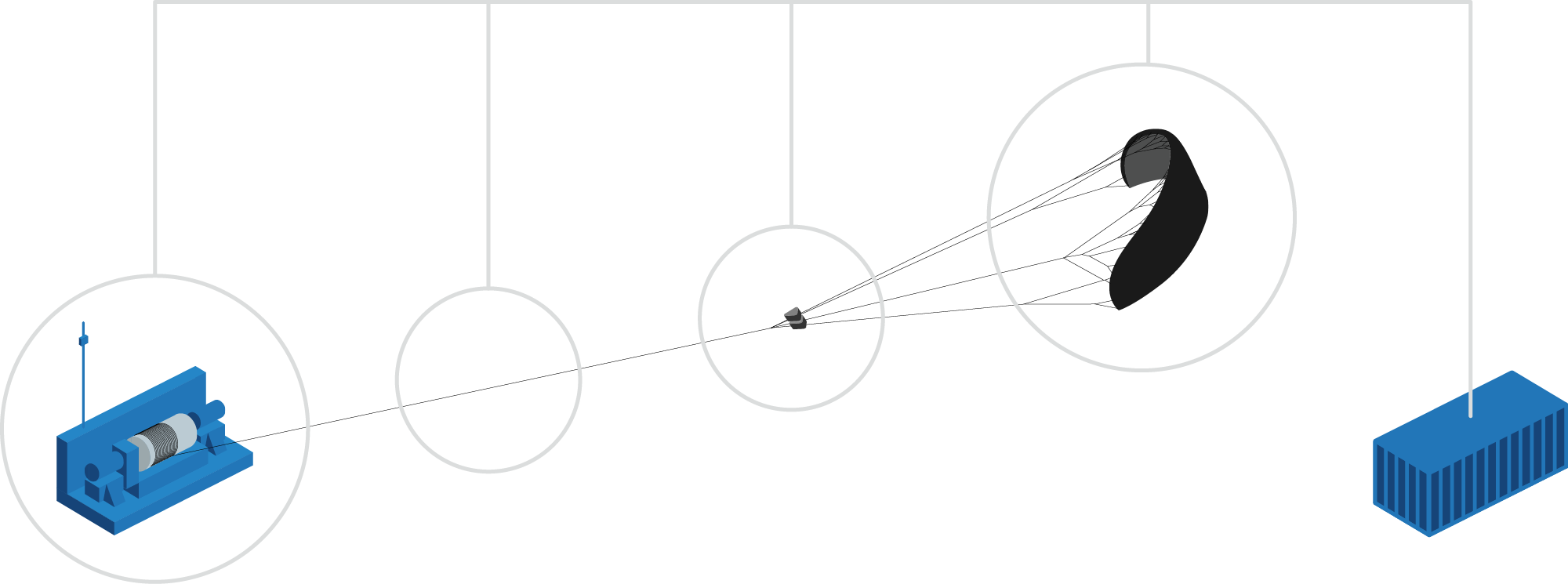Portable Renewable Energy Designed for Modern Worksites
Distributed generation for remote and off-grid worksites currently relies on diesel and HVO100—a costly, polluting, and supply-challenged solution. Next to that, the sustainable alternative of battery swaps comes with inefficiencies and disrupted workflows. Faced with these drawbacks, the need and obligation to integrate renewables on site is on the rise. Kitepower systems, distinguished by their minimal material usage, offer enhanced mobility and resilience and, when paired with a battery, unlock their full potential of a reliable and cost-effective, emission free energy source.
Kitepower delivers portable wind energy that can be effortlessly transported and installed whilst demanding minimal ground space (m2). The Hawk Battery Energy Storage System seamlessly integrates into worksites, established microgrids, and serves remote areas. When the battery is depleted, the kite is launched to charge it. This innovative system is not just revolutionizing wind energy; it is reshaping the conventional battery market with battery energy storage systems that are charged on site with renewable power.
Rent the Hawk
The Kitepower Hawk is available for flexible rental periods of 6 to 12+ months , providing a reliable power solution for remote and off-grid construction sites at a competitive price. Operated by the Kitepower team, the Hawk takes the burden of energy management off hands ensuring a reliable and renewable power solution.










 Restricted Zone
Restricted Zone
 Flight Zone
Flight Zone
 Potential Flight Zone
Potential Flight Zone Safety Buffer
Safety Buffer Landing Zone
Landing Zone
 Launching Corridor
Launching Corridor
 Launch Pad
Launch Pad


